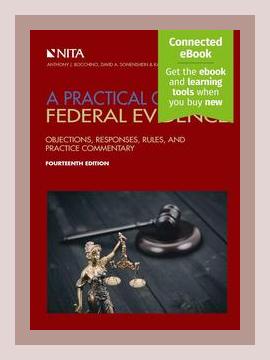Finance and AccountingTaxation
A
Introduction
“A Practical Guide to Federal Taxation” by Thomas R. Pope provides a comprehensive exploration of the U.S. federal taxation system. The book breaks down intricate tax regulations into actionable insights and offers practical examples to help individuals and businesses navigate the tax landscape efficiently.
1. Understanding Income Tax
Key Points:
– Types of Income: The book categorizes income into ordinary income, capital gains, and exempt income. Pope explains the tax implications of each, highlighting their importance in tax planning.
– Gross Income Definition: Gross income encompasses all income from any source unless specifically excluded by law.
Example:
– An individual earns wages (ordinary income) and sells an investment property (capital gains).
Actionable Step:
– Track All Income Sources: Maintain detailed records of all income sources including wages, investments, and any other earnings to ensure accurate reporting.
2. Deductions and Credits
Key Points:
– Deductions: Deductions reduce taxable income. Standard deductions versus itemized deductions are explored with an emphasis on maximizing deductions.
– Credits: Tax credits offer a dollar-for-dollar reduction of tax liability. The book discusses refundable and non-refundable credits.
Example:
– The Earned Income Tax Credit (EITC) for low-income earners.
Actionable Step:
– Itemize When Beneficial: Compare standard deductions versus itemized deductions (such as mortgage interest, medical expenses) to determine the most advantageous method.
3. Business Income and Expenses
Key Points:
– Business Income: Differentiates between business income and personal income, emphasizing the importance of correctly attributing income.
– Deductible Business Expenses: Outlines which business expenses are deductible, such as office supplies, travel, and marketing.
Example:
– A small business owner deducts office rent and utilities as business expenses.
Actionable Step:
– Maintain Detailed Records: Keep meticulous records and save receipts for all business expenses to ensure they are deductible.
4. Taxation of Investments
Key Points:
– Capital Gains and Losses: Differentiates between short-term and long-term capital gains, illustrating how they are taxed differently.
– Dividends and Interest: Discusses the tax treatment of investment income like dividends and interest.
Example:
– Selling stock after holding it for more than a year qualifies for long-term capital gains tax, typically lower than ordinary income tax rates.
Actionable Step:
– Plan Sale Timing: Hold investments for over a year when possible to benefit from lower long-term capital gains rates.
5. Retirement Accounts and Taxation
Key Points:
– Types of Retirement Accounts: Describes different retirement accounts, such as IRAs and 401(k)s, and their tax advantages.
– Required Minimum Distributions (RMDs): Explains when and how much must be withdrawn from retirement accounts to avoid penalties.
Example:
– Contributions to a Traditional IRA may be tax-deductible, reducing taxable income.
Actionable Step:
– Maximize Retirement Contributions: Contribute to tax-advantaged retirement accounts to delay taxation and possibly lower current tax liability.
6. Estate and Gift Taxes
Key Points:
– Estate Taxes: How estate taxes are calculated and exemptions available.
– Gift Taxes: Annual exclusion limits and lifetime exemptions for gifts.
Example:
– Gifts up to $15,000 per year (2021 figure) per recipient can be given without incurring gift tax.
Actionable Step:
– Use Annual Exclusion: Plan gifts to family and friends within the annual exclusion limits to minimize gift taxation impact.
7. Tax Planning and Strategies
Key Points:
– Tax-Deferred Investments: Utilizing tax-deferred accounts to grow investments without immediate tax implications.
– Income Shifting: Legal methods to shift income to family members in lower tax brackets through gifting strategies.
Example:
– Income-shifting through a family limited partnership to children in lower tax brackets.
Actionable Step:
– Consider Family Partnerships: Explore income-shifting strategies where appropriate, ensuring compliance with IRS guidelines.
8. Tax Compliance and Filing
Key Points:
– Filing Requirements: Overview of when and how to file different types of tax returns.
– Recordkeeping: Importance of maintaining records for all income sources, deductions, and credits claimed.
Example:
– Filing Form 1040 for individual income tax returns and attaching necessary schedules for additional income or deductions.
Actionable Step:
– Use Tax Software or a Professional: Utilize reliable tax software or hire a tax professional to ensure accurate and on-time filing.
9. Dealing with the IRS
Key Points:
– Audit Preparation: How to prepare for and respond to an IRS audit.
– Dispute Resolution: Procedures for disputing IRS decisions, including appeal rights.
Example:
– The IRS sends a notice for additional tax owed. Pope explains the steps to contest the notice via formal appeal.
Actionable Step:
– Keep Detailed Documentation: Maintain accurate and detailed documentation to support tax positions if contested by the IRS.
10. Recent Tax Law Changes
Key Points:
– Tax Cuts and Jobs Act (TCJA): Major changes introduced, such as altered tax brackets, increased standard deduction, and the limitation on state and local tax (SALT) deductions.
– Coronavirus Aid, Relief, and Economic Security (CARES) Act: Temporary changes to tax provisions for individuals and businesses affected by the pandemic.
Example:
– CARES Act allowed individuals to withdraw up to $100,000 from retirement accounts without the usual 10% early withdrawal penalty.
Actionable Step:
– Stay Informed on Legislative Changes: Regularly review recent tax law changes to optimize tax planning and compliance.
Conclusion
Thomas R. Pope’s “A Practical Guide to Federal Taxation” demystifies federal tax regulations through clear explanations and practical advice. It equips readers with the knowledge to make informed tax decisions, thereby enhancing their financial planning and compliance capabilities. Whether handling income tax, business expenses, or navigating retirement and estate planning, adhering to the book’s insights and actionable steps can maximize tax efficiency and minimize liabilities.
